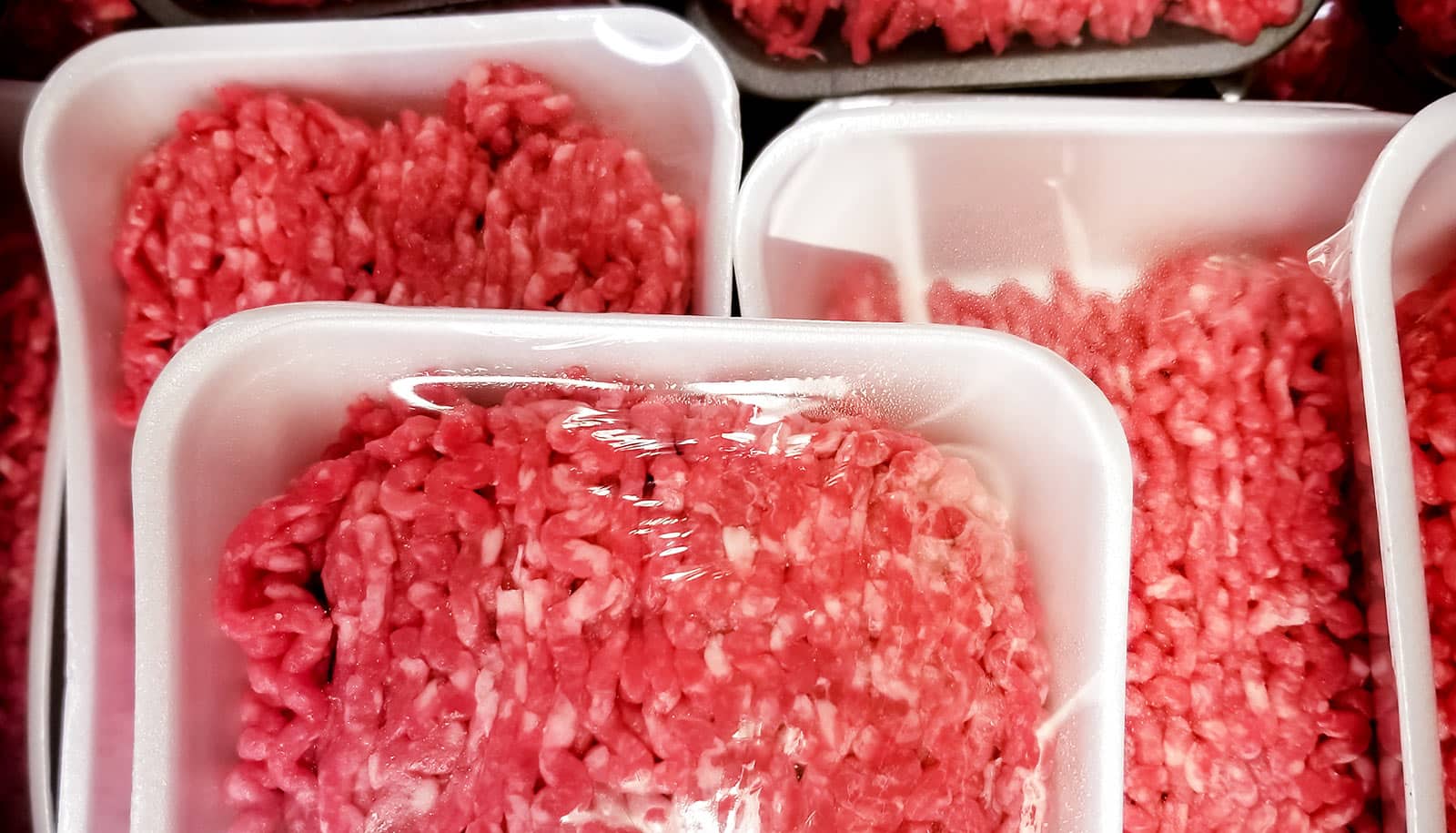A new “water scarcity footprint” measures the water-use impacts of various United States diets.
Meat consumption is the top contributor to the water scarcity footprint of the average US diet, accounting for 31% of the impacts, according to the study in Nature Food. And within the meat category, beef’s contribution is about six times higher than that of chicken.
But other foods that require lots of water or that are mainly grown in US regions where water is scarce—including certain fruits, nuts, and vegetables—also have high water-scarcity footprints, the researchers say.
“Beef is the largest dietary contributor to the water scarcity footprint, as it is for the carbon footprint,” says study lead author Martin Heller of the Center for Sustainable Systems at University of Michigan’s School for Environment and Sustainability.
“But the dominance of animal-based food is diminished somewhat in the water scarcity footprint, in part because the production of feed grains for animals is distributed throughout less water-scarce regions, whereas the production of vegetables, fruits, and nuts is concentrated in water-scarce regions of the United States, namely the West Coast states and the arid Southwest.”
The new approach combines the types and quantities of foods in the diets of individuals, the irrigation water required to produce those foods, and the relative scarcity of water where the irrigation occurs.
The study also includes examples of dietary substitutions that consumers can make to reduce their personal water scarcity footprint. For example, they can:
- Replace some high water-intensity tree nuts (almonds, walnuts, and cashews) with peanuts or seeds.
- Limit consumption of high water-intensity vegetables and replace them with lower-intensity vegetables such as fresh peas, Brussels sprouts, cabbage, and kale.
- Replace some beef with other protein sources, such as chicken, pork, soybeans, dry edible beans, peanuts, or sunflower seeds.
- The concept of the water scarcity footprint is akin to the more familiar carbon footprint, which estimates the greenhouse gas emissions that specific human activities, products, and processes produce. One key difference: Greenhouse gas emissions boost levels of heat-trapping gases globally, while the effects of dietary choices on water scarcity are mainly local.
A handful of previous studies have looked at how variation in dietary choices influences water scarcity, but most of those studies relied on national-level dietary data. The new study, in contrast, links the water scarcity impacts of food production to the individual dietary choices of more than 16,000 Americans.
Also, most previous studies do not recognize the impacts of regional differences in water scarcity, even though irrigation in the US is highly regionalized, with 81% of the water use occurring in 17 Western states.
The new analysis looked at the irrigation water demands of 160 crops, taking into account water scarcity conditions at the watershed level. Scarcity-weighted water consumption data were used to establish a water scarcity footprint for each crop.
The individual crop footprints were then aggregated to the national level and linked to dietary-choice data from the federal National Health and Nutrition Examination Survey, which looked at the dietary choices of 16,800 Americans.
“Our approach is novel in that it links individual dietary choices with the water scarcity-weighted impact of irrigation for specific crops at the watershed level, thus offering insight into the distribution of impacts across a population,” says study coauthor Greg Keoleian, director of the Center for Sustainable Systems at the University of Michigan’s School for Environment and Sustainability.
To further investigate how dietary choices affect water scarcity, the researchers ranked all of the individual diets by their water scarcity footprint—from lowest impact to highest impact—then divided those diets into five equal groups, or quintiles.
The diets of individuals in the highest-impact quintile accounted for 39% of the overall footprint—a contribution 4.7 times greater than diets in the lowest quintile. Individuals in the top quintile consume large quantities of beef and higher-than-average amounts of tree nuts (almond, walnut, cashew) and high water-intensity fruits and vegetables such as lemon juice, avocado, asparagus, broccoli, and cauliflower, according to the study.
“The water-use impacts of food production should be a key consideration of sustainable diets. But until now, little has been known about the water scarcity demands of diets—especially the diets of individuals,” says study coauthor and overall project principal investigator Diego Rose of Tulane University.
“There is a lot of variation in the way people eat, so having a picture with this sort of granularity—at the individual level—enables a more nuanced understanding of potential policies and educational campaigns to promote sustainable diets.”
Heller says it’s time to start thinking about the resource budgets—measured in carbon, water, and land—of our foods and the costs associated with producing them.
“For water, part of that cost depends on the scarcity of the water where a food is grown,” Heller says. “Budgeting the water scarcity footprint of our diet doesn’t mean we need to eliminate the ‘costly’ foods completely, but it probably means we need to consume them sparingly.”
The Wellcome Trust supported the research.
Source: University of Michigan


